ROUTE:
1.6 km
DURATION:
1 hour
DIFFICULTY:
Medium-Low
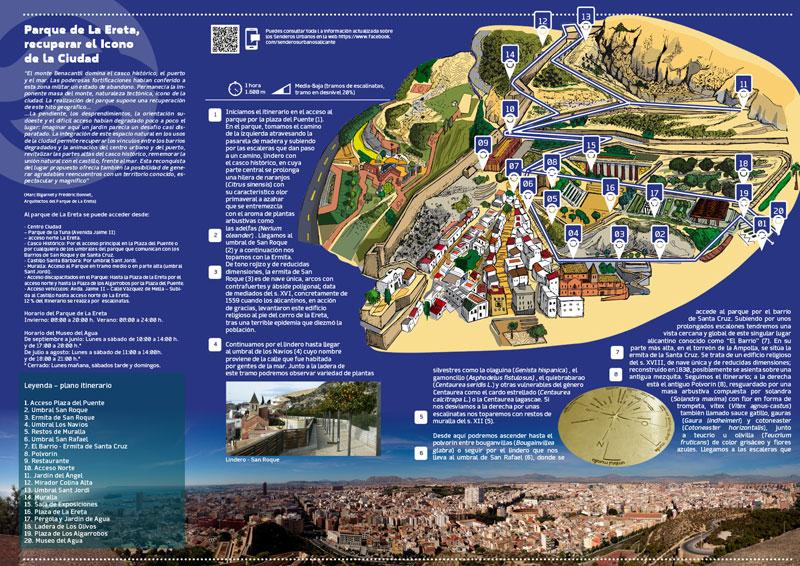
La Ereta Park, recovering the Icon of the City
The Monte Benacantil dominates the historic center, the port, and the sea. The powerful fortifications had given this military area a state of abandonment. Yet, the imposing mass of the mountain, with its tectonic nature, endured as an iconic symbol of the city. The creation of the park marks a restoration of this geographic landmark. Over time, the steep slope, landslides, southwest orientation, and challenging access gradually deteriorated the area, making the idea of envisioning a garden here seem almost absurd.
The integration of this natural space into the city’s daily life restores the connection between neglected neighborhoods and the vibrant city center and port. It revitalizes the upper parts of the historic city center and recalls the natural link to the castle overlooking the sea. Reclaiming the site also allows reconnecting with a familiar, spectacular, and magnificent landscape.
Trail Stops
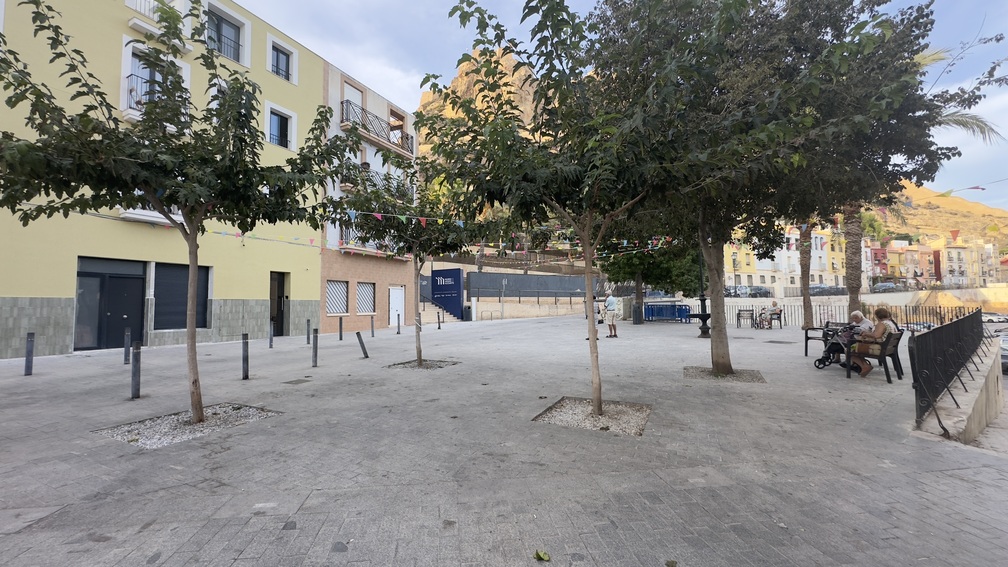
1. Plaza del Puente Access
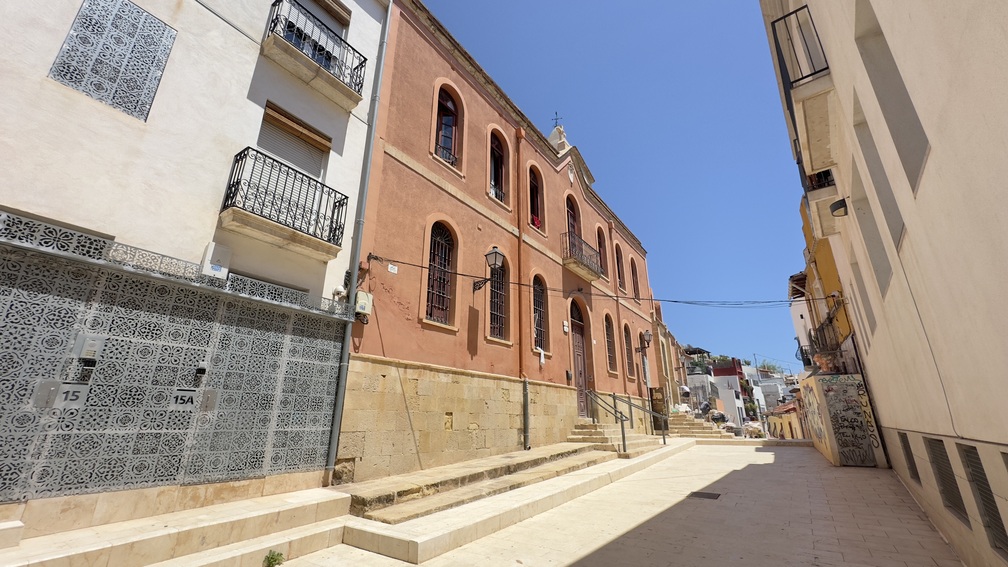
2. Umbral San Roque
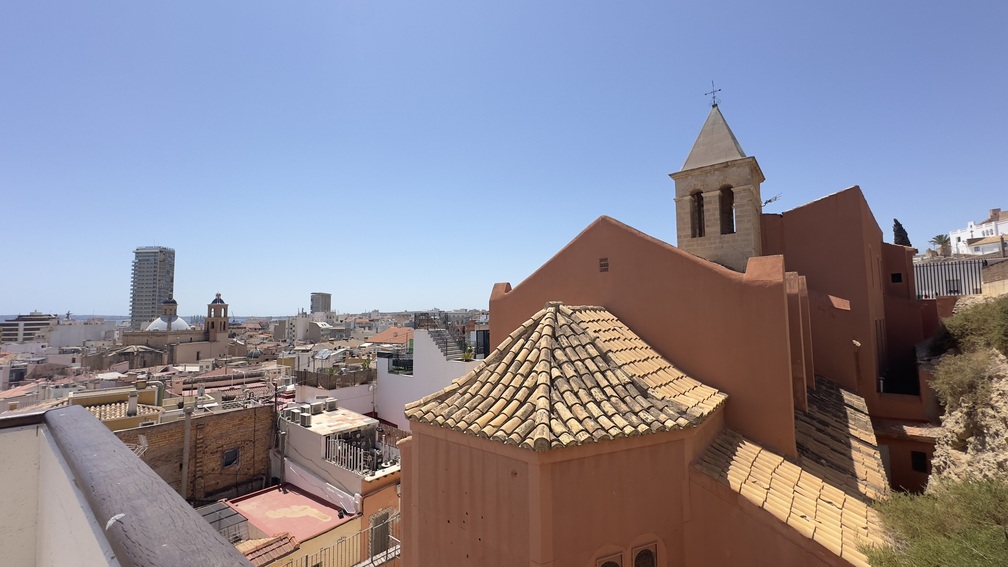
3. San Roque Hermitage
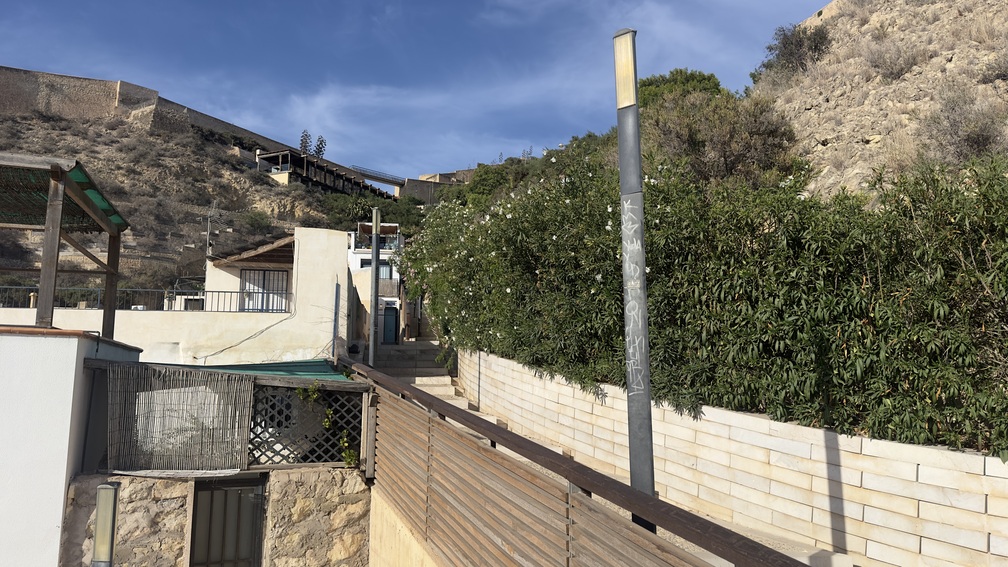
4. Umbral Los Navios
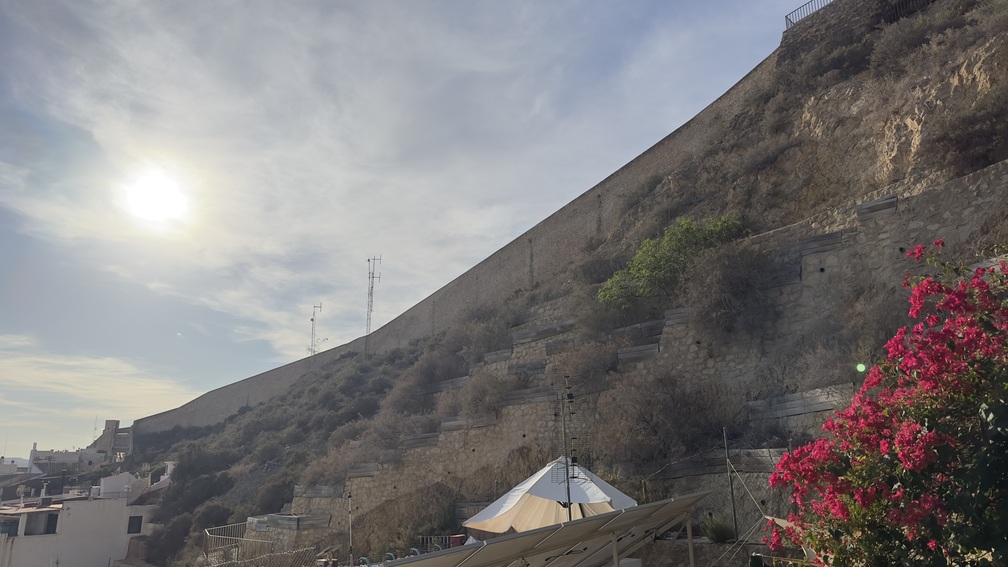
5. Wall Remains
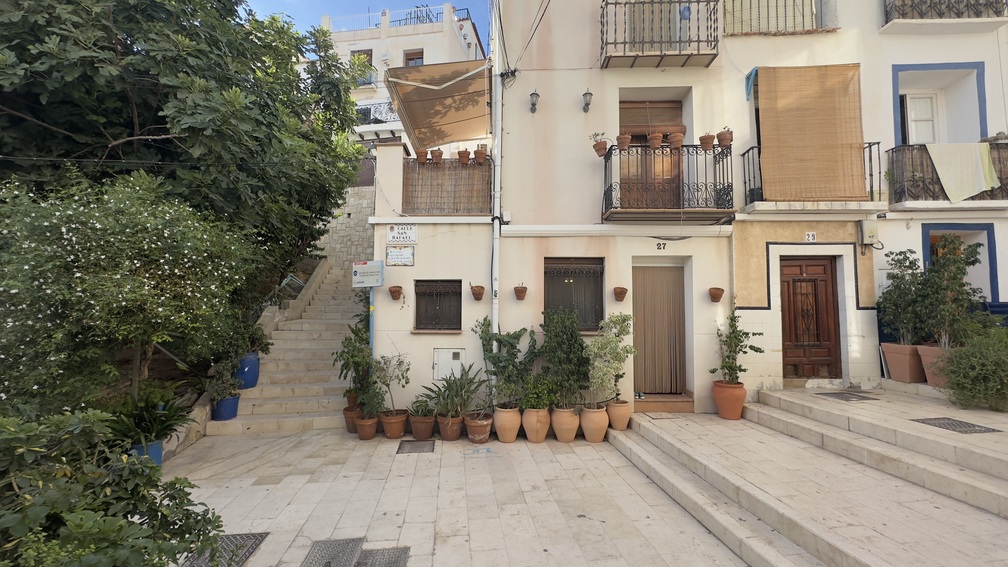
6. Umbral San Rafael
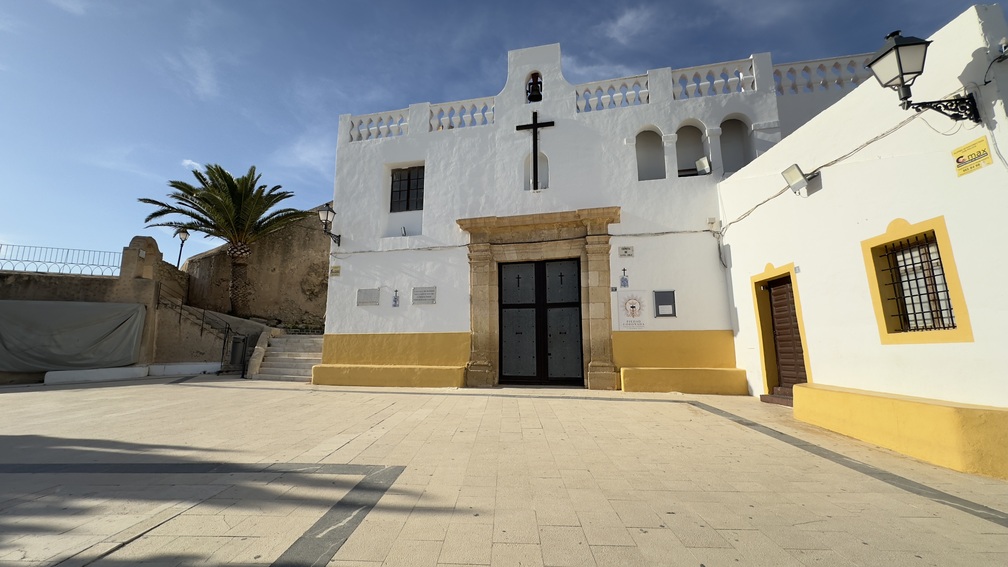
7. El Barrio - Santa Cruz Hermitage
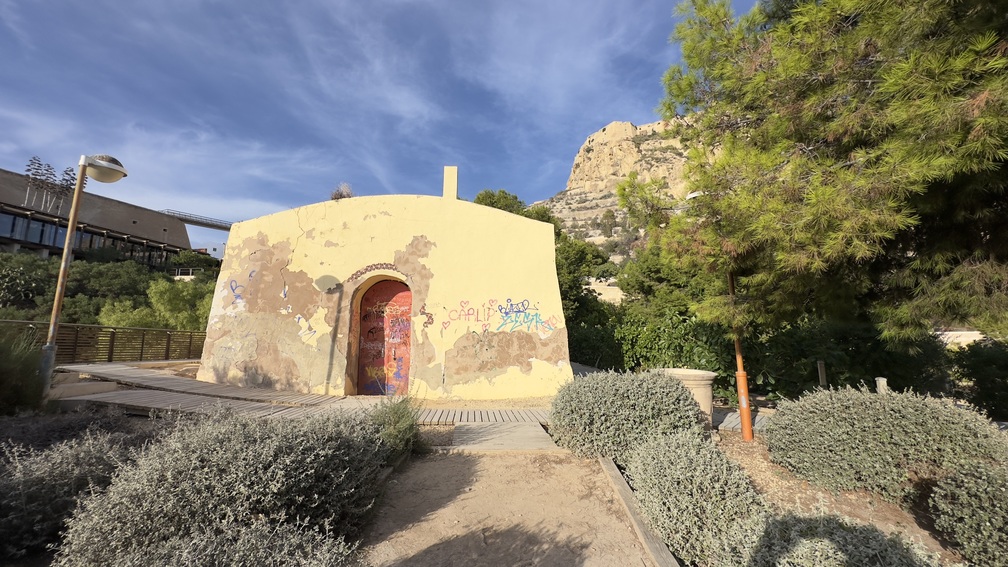
8. Polvorin

9. Restaurant
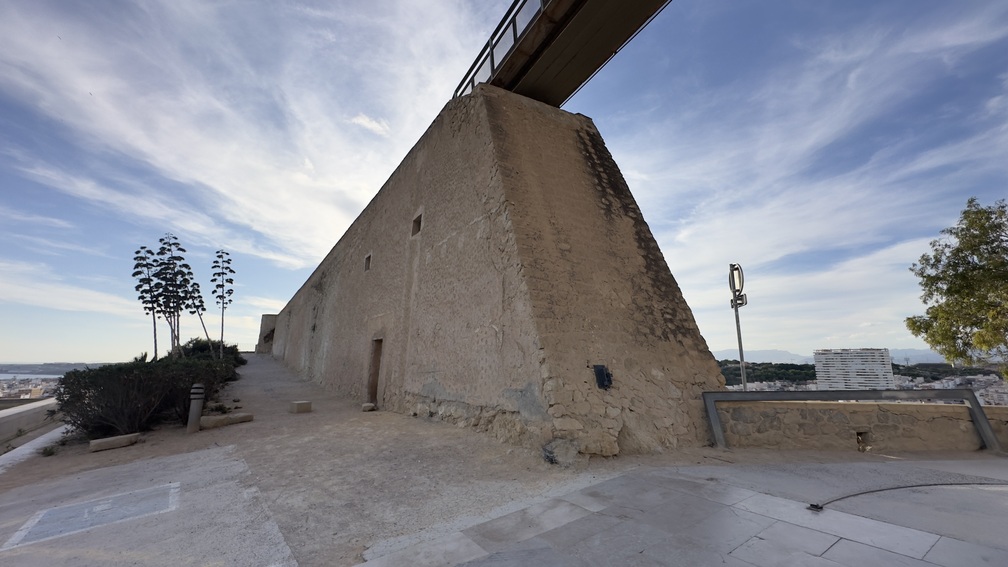
10. North Access
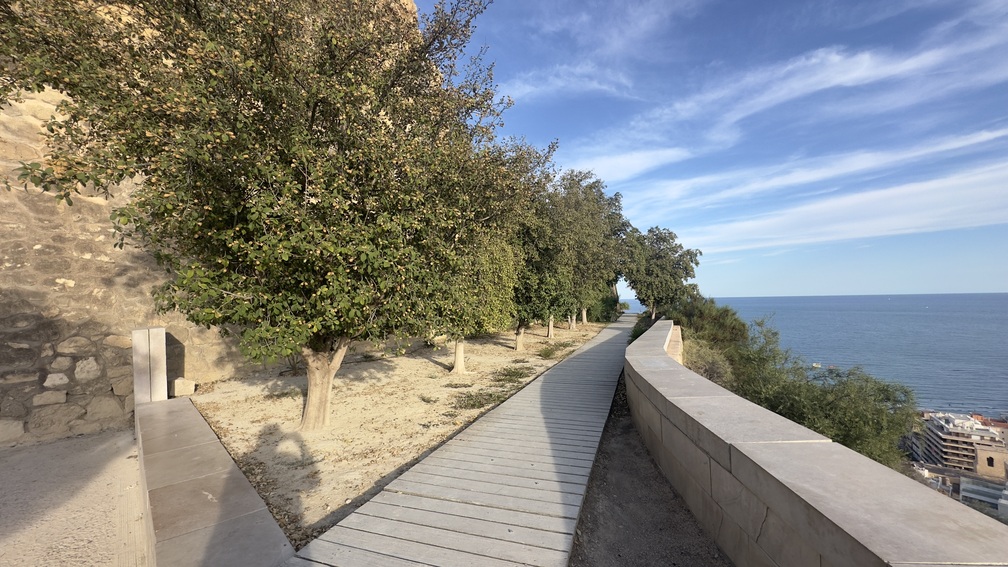
11. Jardin del Angel

12. Mirador Colina Alta

13. Umbral Sant Jordi

14. Wall
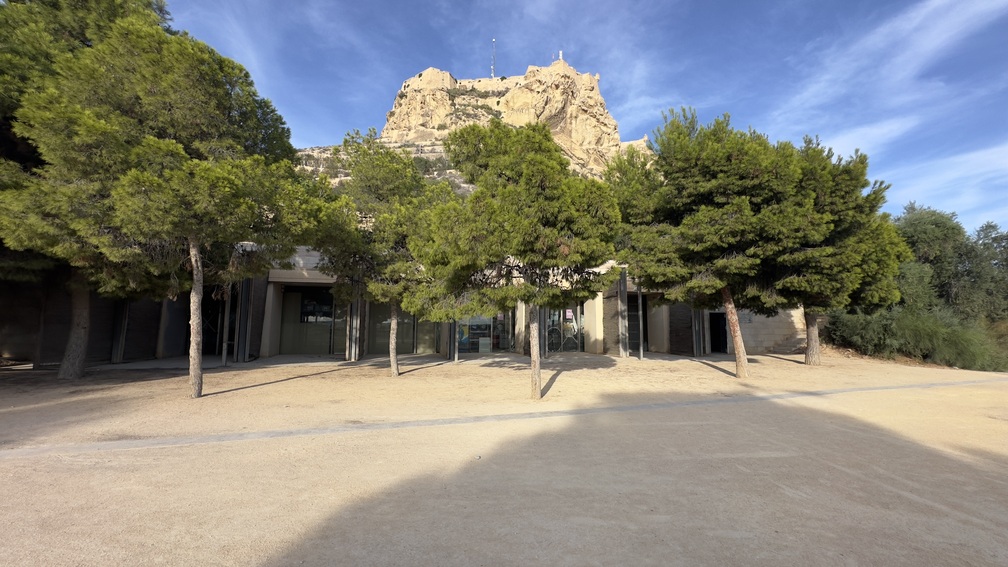
15. Exhibition Hall

16. Plaza La Ereta

17. Pergola and Jardin de Agua
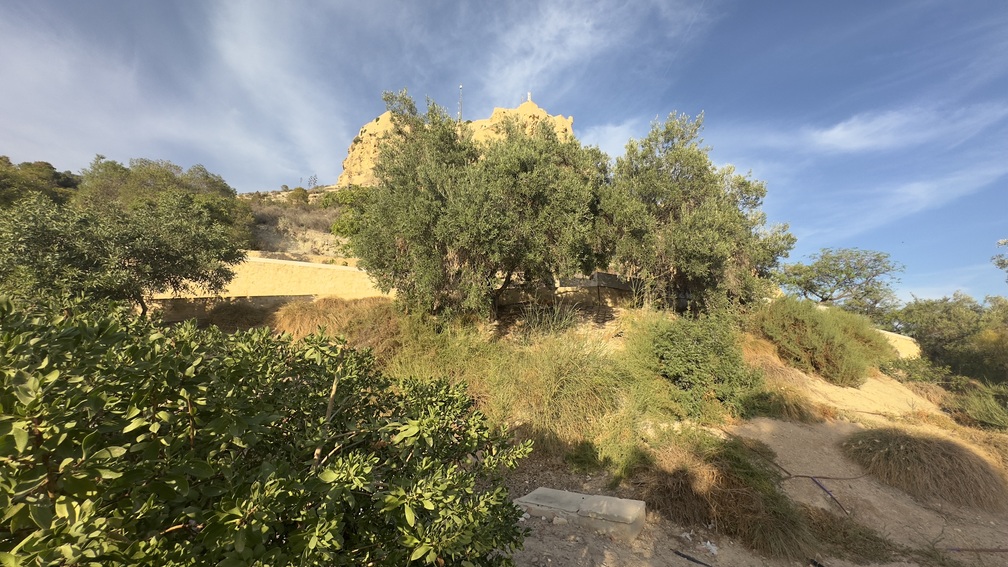
18. Ladera de los Olivos

19. Plaza de los Algarrobos
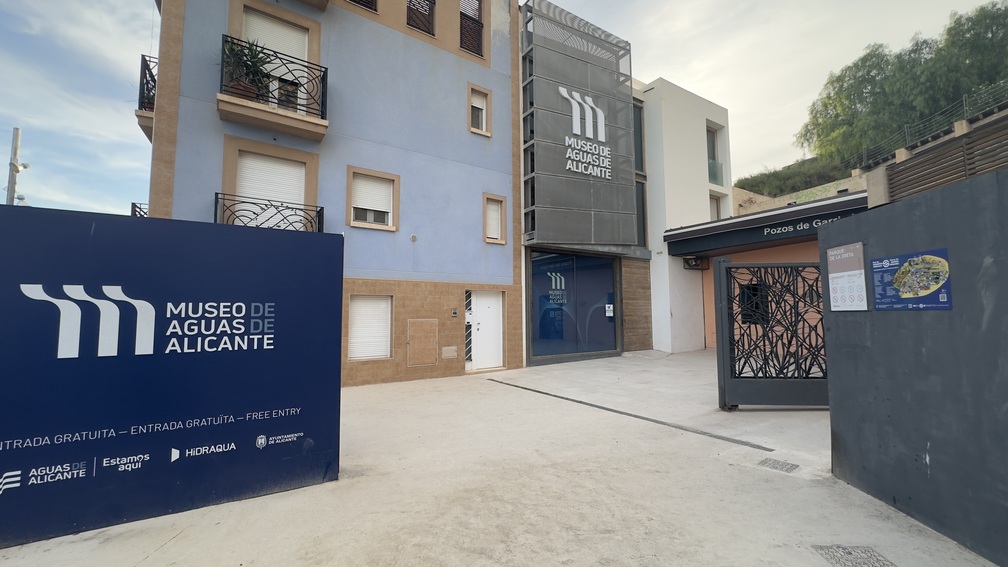
20. Water Museum
All Routes in Alicante
Services that might interest you
|
AGUITUR
Tourist guides accredited by the Valencian Agency of Tourism Tourist guides accredited by the Valencian Agency of Tourism |
|
ALACANT CIRCUIT
Tourist guides accredited by the Valencian Agency of Tourism Tourist guides accredited by the Valencian Agency of Tourism |
|
BLUEMED TOURS S.L
SICTED Badge The Exquisite Mediterranean CREATURISME VALENCIAN COMMUNITY CULTURAL CRATURISME VALENCIAN COMMUNITY WINE TOURISM CONVENTION BUREAU ALICANTE ALICANTE WINE ROUTE Tourist guides accredited by the Valencian Agency of Tourism Languages: English, Spanish, French, Valencian |
|
Esatur XXI, S.L.
Distintivo SICTED ISO 9001 ISO 14001 ISO 27001 Tourist guides accredited by the Valencian Agency of Tourism Tourist guides accredited by the Valencian Agency of Tourism Languages/ Languages: English, Español, Valencià |
|
FREE WALKING TOURS ALICANTE
Tourist guides accredited by the Valencian Agency of Tourism Tourist guides accredited by the Valencian Agency of Tourism |
|
OXYTOURS
Guías de Turismo acredidatos por la Agencia Valenciana de Turismo Tourist guides accredited by the Valencian Agency of Tourism |
|
TRAMUNTANA AVENTURA
Q Certificate for Tourist Quality Sicted Certificate Tourist Guides accredited by the Valencian Agency of Tourism Tourist guides accredited by the Valencian Agency of Tourism |
|
TURIGUIAS
SICTED Quality Certificate Tourist guides accredited by the Valencian Agency of Tourism Tourist guides accredited by the Valencian Agency of Tourism |
|
ULA Guides
SICTED Distinctive Tourist guides accredited by the Valencian Agency of Tourism Tourist guides accredited by the Valencian Agency of Tourism Languages/ Languages: Deutsch, English, Español, Français, Italiano, Valencià, others |
| Alicante By Bike & Rentals Tours |
| Bike Rent in Alicante |
| Blue Bike | Rental & Tour |
| Rent Point- Rent Bike Alicante |
| Bikes&City Alicante – Alquiler, rutas |
| BLUE BIKE ALICANTE |
| ESATUR |
| SEGWAY ALICANTE |
| SIS TOURS EVENTS |
| TRAMUNTANA AVENTURA |
| AKRAVIBE |
| AVENTURERO CATAMARÁN S.L |
| ALICANTE RACING QUADS RENT |
| ALIJETSET |
| AWANA |
| BLUE VALLEY |
| CENTRO BUCEO ALTAIR |
| CLUB DE SURF EL MORENO |
| EPICALBOATS |
| ENERGY ACTIVE CLUB |
| FANAUTIC CLUB ALICANTE |
| HIKINGALICANTE |
| LLOGA UN LLAÜT |
| MARINA JETS S.L |
| OXYTOURS |
| PARASAILING ALICANTE |
| SIS TOURS EVENTS |
| TERRENODEAVENTURA |
| TRAMUNTANA AVENTURA |
| ALICANTE RACING QUADS RENT |
| OXYTOURS |
| TRAMUNTANA AVENTURA |
* Important Notice
The Alicante Municipal Tourist Board is not responsible for any changes that may occur in the contact details, schedules, locations of accommodations, restaurants, tourist service companies, and transport, as well as in the cultural facilities of the city. It is recommended to verify the information in advance.







